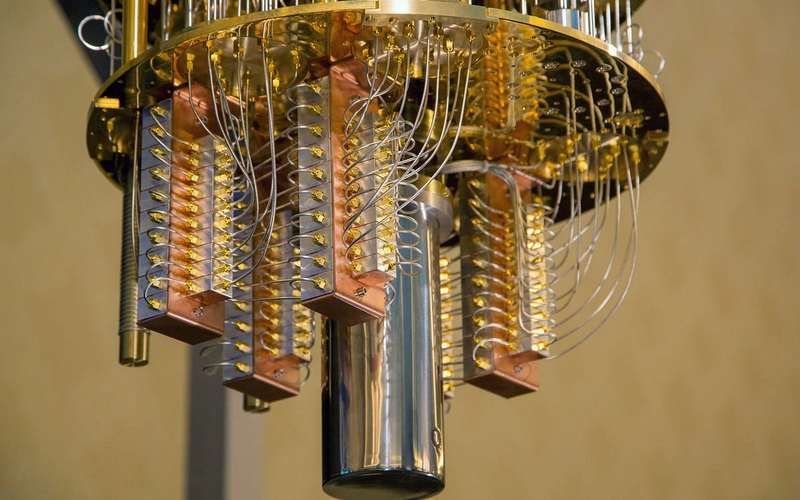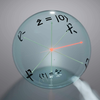
Introduction To Quantum Computing
How Quantum Computers Work?
Quantum computers operate based on several key quantum phenomena:
- Qubits: These are the fundamental units of quantum information, analogous to bits in classical computers, but they can hold more information by being in multiple states at once.
- Superposition: This allows a qubit to be in a combination of both 0 and 1 states simultaneously until it is measured.
- Entanglement: When qubits are entangled, they become linked in such a way that they cannot be described independently, no matter how far apart they are.
- Interference: Quantum algorithms use interference to reinforce paths leading to the correct answer while canceling out those that are incorrect.
Potential Applications:
Quantum computers have the potential to revolutionize various fields by tackling problems that are currently impossible for classical machines. Some potential applications include:
- Drug discovery and materials science: Simulating the behavior of molecules to design new drugs and materials.
- Optimization: Solving complex logistical problems, such as optimizing supply chains or traffic routes.
- Finance: Predicting market movements and improving financial modeling.
- Artificial Intelligence: Accelerating machine learning processes and developing new AI algorithms.
Key Differences from Classical Computers
- Information processing: Classical computers process data sequentially, one step at a time, while quantum computers can process many possibilities in parallel.
- Hardware: Quantum computers use specialized hardware, such as superconducting qubits or trapped ions, often requiring extreme conditions like near-absolute-zero temperatures.
- Error rates: Today's quantum computers are rudimentary and prone to errors, making them challenging to operate.
Quantum computing is still an emerging field, but significant progress is being made by governments, companies, and research labs worldwide.
Annealer technology
Annealer technology is a specialized type of quantum computer that solves complex combinatorial optimization problems by leveraging quantum effects like superposition and tunneling. It works by transforming a problem into a physical system of qubits and slowly evolving it to find the system's lowest energy state, which corresponds to the optimal solution. Annealers are distinct from gate-based quantum computers and are particularly well-suited for problems in logistics, finance, and machine learning.
How Quantum Annealing Works
n quantum annealers, each state can be represented as an energy level. These states are simulated in a short time by taking advantage of the superposition and entanglement properties of qubits and the lowest energy result is obtained. The lowest energy state gives the optimal solution or the most likely solution.
For example, let’s consider a travelling salesman problem. Imagine a salesman who needs to stop by 50 different cities and come back to the starting point with a minimum distance. Mathematically, there are 50 factorial different solutions to this problem. Since we are looking for the shortest distance, we need to find the least energy situation in other words, global minimum.
Finding the shortest path by calculating all the possibilities is a costly method in terms of time and energy, for many complex problems, it is almost impossible.
Using quantum annealing, this problem is designed with a method called coupling (Therefore, in broad terms quantum coupling is used to describe an effect in quantum mechanics in which two or more quantum systems are bound such that a change in one of the quantum states in one of the systems will cause an instantaneous change in all of the bound systems. It is a state similar to quantum entanglement, but whereas quantum entanglement can take place over long distances, quantum coupling is typically restricted to quantum-scale interactions.) qubits. Thanks to the different magnetic fields applied to the qubits, the distance between each city is added to the design as an energy parameter.
- Problem Encoding: A real-world optimization problem, such as the travelling salesman problem, is mapped onto a physical system of qubits in a way that the problem's solution corresponds to the lowest energy configuration of the system.
- Superposition: The system begins in a quantum-mechanical superposition of all possible states, effectively considering every potential solution simultaneously.
- Quantum Adiabatic Evolution: The system then undergoes a slow, continuous evolution according to the Schrödinger equation.
- Finding the Ground State: As the system evolves, it gradually transitions from its initial quantum state to the ground state of the problem Hamiltonian, which represents the problem's global minimum energy state and, thus, the optimal solution.
- Output: At the end of the process, the qubits settle into a classical state, providing the user with the solution to the original problem.
Key Features
- Specialized for Optimization: Unlike universal quantum computers, annealers are specifically designed for finding the global minimum or maximum of an objective function.
- Error Tolerance: Quantum annealers are generally more tolerant of errors and noise compared to gate-based quantum computers, which allows them to scale to enterprise-level problems.
- Alternative to Gate-Based Systems: Annealing offers a different approach to quantum computing, leveraging quantum fluctuations to navigate complex energy landscapes rather than a sequence of quantum gates.
D-Wave quantum computer
A D-Wave quantum computer is a type of quantum computing system, the world's first commercial supplier of which is D-Wave Quantum. Unlike traditional quantum computers, D-Wave systems primarily use a process called quantum annealing to find solutions to complex optimization and artificial intelligence problems by evolving towards a system's lowest energy state. These systems are used by over 100 organizations for real-world applications in logistics, finance, and drug discovery, and are accessible via the cloud through services like D-Wave's Leap.
How D-Wave Quantum Computers Work
- Quantum Annealing: D-Wave's approach is centered on quantum annealing, a method to solve optimization problems.
- Energy Minimization: The process works by analogous to a physical system seeking its lowest energy state (like a ball rolling into a valley).
- Problem Solving: The quantum computer explores a vast "energy landscape" to find the lowest energy configuration, which corresponds to the optimal solution for the problem at hand.
What D-Wave Offers
- Full-Stack Systems: D-Wave provides comprehensive quantum computing solutions, including hardware, software, cloud access, and professional services.
- Commercial Access: Businesses and researchers can access D-Wave systems through cloud platforms, allowing them to run and develop quantum applications.
- Practical Applications: The company focuses on practical, real-world applications and has a focus on enabling businesses to achieve tangible value from quantum computing.
Use Cases:
D-Wave quantum computers are applied to a range of industries and problems, including:
- Logistics and Scheduling: Optimizing routes and scheduling.
- Financial Services: Developing new financial models and algorithms.
- Drug Discovery and Materials Science: Accelerating research in these fields.
- Artificial Intelligence: Enhancing AI models and machine learning processes.
- Supply Chain Management: Improving efficiency and responsiveness in supply chains.
Trapped ion quantum computers
A trapped ion quantum computer uses individual ions (charged atoms) as qubits, held in space by electromagnetic fields inside an ion trap.
Each ion’s internal energy levels act as qubit states |0⟩ and |1⟩, while laser light is used to initialize, manipulate, and read them out.
Trapped ions combine:
- ⚛️ Atomic precision (identical qubits)
- 🎯 Long coherence times (seconds to minutes)
- 💡 High-fidelity gates (over 99.9%)
- 🌐 Optical connectivity (scalability)
The Physics Behind Ion Traps
2.1 The Challenge
A free charged particle (ion) cannot be confined using static electric fields alone (Earnshaw’s theorem).
Hence, dynamic fields (oscillating electric potentials) are used to create effective potential wells.
2.2 The Paul Trap (RF Quadrupole Trap)
Paul Trap Dynamics
The Paul trap utilizes an oscillating electric field to achieve three-dimensional ion confinement through dynamic stabilization.
Potential Field Formulation
The time-dependent electric potential is described by:
$$\Phi(x, y, t) = \frac{U + V_{\text{RF}}\cos(\Omega t)}{2r_0^2} (x^2 - y^2)$$
Parameter Definitions:
- \(U\): Static DC voltage component
- \(V_{\text{RF}}\): Radiofrequency voltage amplitude
- \(\Omega\): Angular drive frequency
- \(r_0\): Characteristic trap radius
Governing Equation of Motion
The ion dynamics are characterized by the Mathieu equation:
$$\frac{d^2u}{d\tau^2} + \left[a_u - 2q_u \cos(2\tau)\right]u = 0$$
Dimensionless Parameters:
- \(a_u\): DC stability parameter
$$a_u = \frac{4QU}{m r_0^2 \Omega^2}$$
- \(q_u\): RF stability parameter
$$q_u = \frac{2QV_{\text{RF}}}{m r_0^2 \Omega^2}$$
Physical Interpretation:
- \(u = x, y\): Spatial coordinates in the trap plane
- \(Q\): Electric charge of the confined ion
- \(m\): Mass of the confined ion
- \(\tau\): Normalized time coordinate
Stability Analysis
The solutions to the Mathieu equation exhibit stable, bounded motion when the parameters \((a_u, q_u)\) lie within specific stability regions in parameter space, enabling long-term ion confinement.
This creates stable oscillatory motion governed by the Mathieu equation:
$$\frac{d^2u}{d\tau^2} + (a_u - 2q_u \cos(2\tau))u = 0$$
where:
- \(u = x, y\)
- \(a_u = \frac{4QU}{m r_0^2 \Omega^2}\)
- \(q_u = \frac{2QV_{\text{RF}}}{m r_0^2 \Omega^2}\)
2.3 Secular Motion and Micromotion
The ion's trajectory is composed of:
$$x(t) = X_0 \cos(\omega_x t) \left(1 + \frac{q_x}{2} \cos(\Omega t)\right)$$
where:
- Secular motion: slow oscillation (trap frequency \(\omega_x\))
- Micromotion: fast oscillation at \(\Omega\)
3️⃣ The Ion as a Qubit
An ion has many internal states - two of which are chosen to encode a qubit.
Example (Yb⁺ ion):
- \(|0\rangle = |F=0, m_F=0\rangle\)
- \(|1\rangle = |F=1, m_F=0\rangle\)
Transition frequency ≈ 12.6 GHz
Controlled by microwave or laser radiation
Long coherence time (seconds)
4️⃣ Initialization - Laser Cooling
To perform precise operations, ions must be cooled close to their motional ground state.
4.1 Doppler Cooling
Use a laser slightly red-detuned from an electronic transition.
Energy removed per photon ≈ \(\hbar k v\)
Minimum achievable temperature:
$$T_D = \frac{\hbar \Gamma}{2 k_B}$$
where:
- \(\Gamma\) = natural linewidth
- \(k_B\) = Boltzmann constant
4.2 Sideband Cooling
For motional ground state preparation (below Doppler limit), we drive red sideband transitions - each removes one phonon (vibrational quantum).
5️⃣ Qubit Control - Rabi Oscillations
Applying a resonant field couples \(|0\rangle\) and \(|1\rangle\) states.
Hamiltonian:-
$$H = \frac{\hbar \Omega_R}{2} (\sigma_x \cos \phi + \sigma_y \sin \phi)$$
Time evolution:-
$$|\psi(t)\rangle = \cos\left(\frac{\Omega_R t}{2}\right) |0\rangle - i e^{i\phi} \sin\left(\frac{\Omega_R t}{2}\right) |1\rangle$$
Result → oscillation between \(|0\rangle\) and \(|1\rangle\) with frequency \(\Omega_R\) (the Rabi frequency).
- π-pulse-: complete population transfer
- π/2-pulse-: creates superposition
6️⃣ Multi-Qubit Gates - Coulomb Interaction
Trapped ions share collective motion (like coupled springs). We can use this shared vibrational mode to entangle ions.
Mølmer–Sørensen Gate (Entangling)
Applies a bichromatic laser field detuned near sidebands:
$$H_{MS} = \hbar \frac{\Omega^2 \eta^2}{\delta} S_x^2$$
→ generates an entangled state:
$$|\psi\rangle = \frac{1}{\sqrt{2}} (|00\rangle + i |11\rangle)$$
7️⃣ Readout - State-Dependent Fluorescence
After computation:
Shine detection laser resonant with one state (\(|1\rangle\)).
Measure emitted fluorescence photons:
- Bright → \(|1\rangle\)
- Dark → \(|0\rangle\)
Efficiency > 99.9%
Superconducting Quantum Computers
🧩 Core Idea
Qubits are made from superconducting circuits that behave like artificial atoms - they have discrete energy levels when cooled near absolute zero.
⚙️ How It Works
- Josephson junctions : Superconductors separated by a thin insulator
- Qubit states : The two lowest energy levels represent \(|0\rangle\) and \(|1\rangle\)
- Control : Microwave pulses control state transitions (Rabi oscillations)
- Gates : Implemented via precise pulse shaping and coupling circuits
🔬 Mathematical Model
The Hamiltonian of a transmon qubit:
$$H = 4E_C (n - n_g)^2 - E_J \cos(\phi)$$
Parameters:
- \(E_C\): Charging energy
- \(E_J\): Josephson energy
- \(n\): Number of Cooper pairs
- \(n_g\): Gate charge
- \(\phi\): Superconducting phase
The system approximates a weakly anharmonic oscillator, where the two lowest energy levels form the computational basis states.
💡 Advantages
- Speed : Fast gate times (10–100 ns)
- Scalability : Uses chip fabrication (lithography)
- Ecosystem : Mature infrastructure for cryogenic electronics and qubit control
⚠️ Challenges
- Temperature : Requires ultra-low temperature (\(\approx 15\) mK)
- Decoherence : Susceptible to noise and crosstalk
- Uniformity : Fabrication defects affect qubit consistency
🧱 Examples
IBM Quantum, Google Sycamore, Rigetti Aspen, Intel Horse Ridge
Spin-Based Quantum Computers
🧩 Core Idea
Qubits are encoded in the spin states of electrons or nuclei, controlled by magnetic and electric fields.
⚙️ Variants
- Silicon quantum dots : Single electrons trapped in semiconductor wells
- Donor qubits : Phosphorus atom embedded in silicon; nuclear/electron spin = qubit
🔬 Hamiltonian
$$H = g \mu_B \mathbf{B} \cdot \mathbf{S}$$
where:
- \(\mathbf{S}\) = spin operator
- \(\mathbf{B}\) = magnetic field
- \(g\) = g-factor
- \(\mu_B\) = Bohr magneton
💡 Advantages
- Compatible with CMOS fabrication
- Very long coherence times
- High potential for dense integration
⚠️ Challenges
- Single-spin control is delicate
- Initialization and readout are slow
🧱 Examples
Intel & UNSW (Silicon Quantum Computing), Delft University (QuTech)
💎 Diamond NV Center Quantum Computers
🧩 Core Idea
Uses nitrogen-vacancy (NV) centers in diamond - atomic defects where a nitrogen atom replaces a carbon atom and leaves a vacant site next to it.
⚙️ How It Works
- The NV center's unpaired electron spin represents a qubit
- Controlled by microwave fields
- Optical excitation used for initialization and readout
🔬 Spin State Diagram
$$|m_s = 0\rangle \leftrightarrow |m_s = \pm 1\rangle$$
💡 Advantages
- Works at room temperature
- Excellent quantum sensors (magnetic fields, temperature)
- Robust solid-state platform
⚠️ Challenges
- Difficult to scale into large systems
- Limited gate fidelity compared to trapped ions
🧱 Examples
Quantum Diamond Technologies, Element Six, Harvard Quantum Initiative
🔦 Photonic Quantum Computers
🧩 Core Idea
Qubits are encoded in photons - the fundamental particles of light.
⚙️ Encoding Options
- Polarization (\(|H\rangle\), \(|V\rangle\))
- Path (dual-rail encoding)
- Time-bin or frequency modes
💡 How It Works
- Linear optical elements (beam splitters, phase shifters) perform gates
- Single-photon detectors read outputs
- Entanglement through interference (Hong–Ou–Mandel effect)
🔬 Mathematical Model
Quantum state of n-photon system:
$$|\psi\rangle = \sum_{i_1,i_2,...,i_n} c_{i_1 i_2 ... i_n} |i_1 i_2 ... i_n\rangle$$
where \(i_k\) represent different photonic modes.
💡 Advantages
- Room-temperature operation
- Fast transmission over optical fiber
- Ideal for quantum communication and networked computing
⚠️ Challenges
- Hard to generate and detect single photons reliably
- Gate probabilistic unless using nonlinear optics
🧱 Examples
Xanadu (Canada), PsiQuantum, ORCA Computing
⚛️ Topological Quantum Computers
🧩 Core Idea
Information is stored in non-Abelian anyons — exotic quasiparticles that exist only in 2D materials under special conditions.
⚙️ How It Works
- Qubits are defined by braiding paths of anyons
- Operations depend only on topological configuration, not local noise
💡 Mathematical Foundation
Uses topological quantum field theory (TQFT). A qubit is encoded in the fusion space of anyons.
Topological protection ⇒ intrinsic error resistance.
💡 Advantages
- Naturally fault-tolerant
- Immune to local perturbations
⚠️ Challenges
- Requires exotic states of matter (Majorana zero modes)
- Still theoretical; experimental proof ongoing
🧱 Examples
Microsoft Quantum (Majorana-based), Delft University
🧮 Neutral Atom Quantum Computers
🧩 Core Idea
Neutral atoms (not ions) are trapped in optical tweezers — tightly focused laser beams.
⚙️ How It Works
- Atoms arranged in 2D or 3D arrays
- Qubits = hyperfine states of each atom
- Lasers excite atoms to Rydberg states (high-energy) for strong interactions → enables entangling gates
🔬 Rydberg Interaction
$$V(r) = \frac{C_6}{r^6}$$
where \(C_6\) is the van der Waals coefficient, \(r\) is distance between atoms.
💡 Advantages
- Highly reconfigurable (move atoms with light)
- Scales to thousands of qubits
- Long coherence times
⚠️ Challenges
- Requires precise optical control
- Sensitive to laser noise and atom loss
🧱 Examples
QuEra, ColdQuanta (Infleqtion), Pasqal
⚗️ Quantum Dot Quantum Computers
🧩 Core Idea
Quantum dots are tiny semiconductor structures that confine electrons in all three dimensions - "artificial atoms".
Each dot = potential well. Electron spin or charge = qubit.
💡 Advantages
- Integrates with CMOS technology
- Tunable properties
⚠️ Challenges
- Decoherence from material defects
- Difficult to couple dots over long range
🧱 Examples
University of Tokyo, Intel, and Toshiba Research











